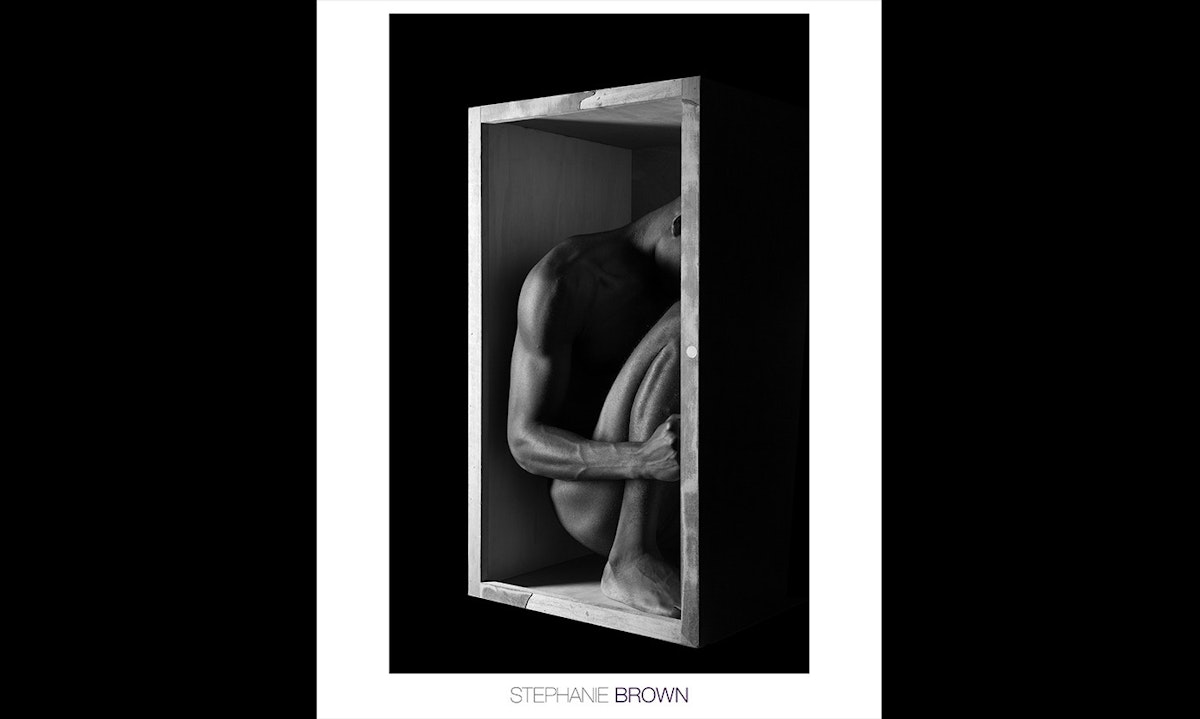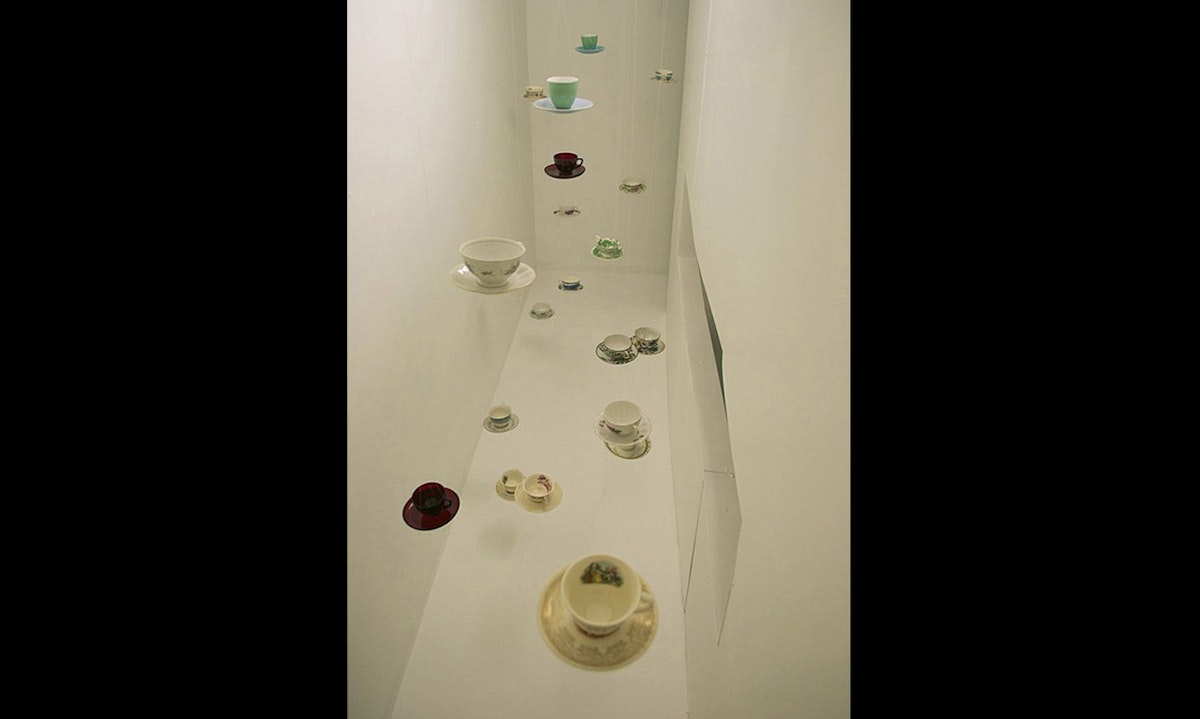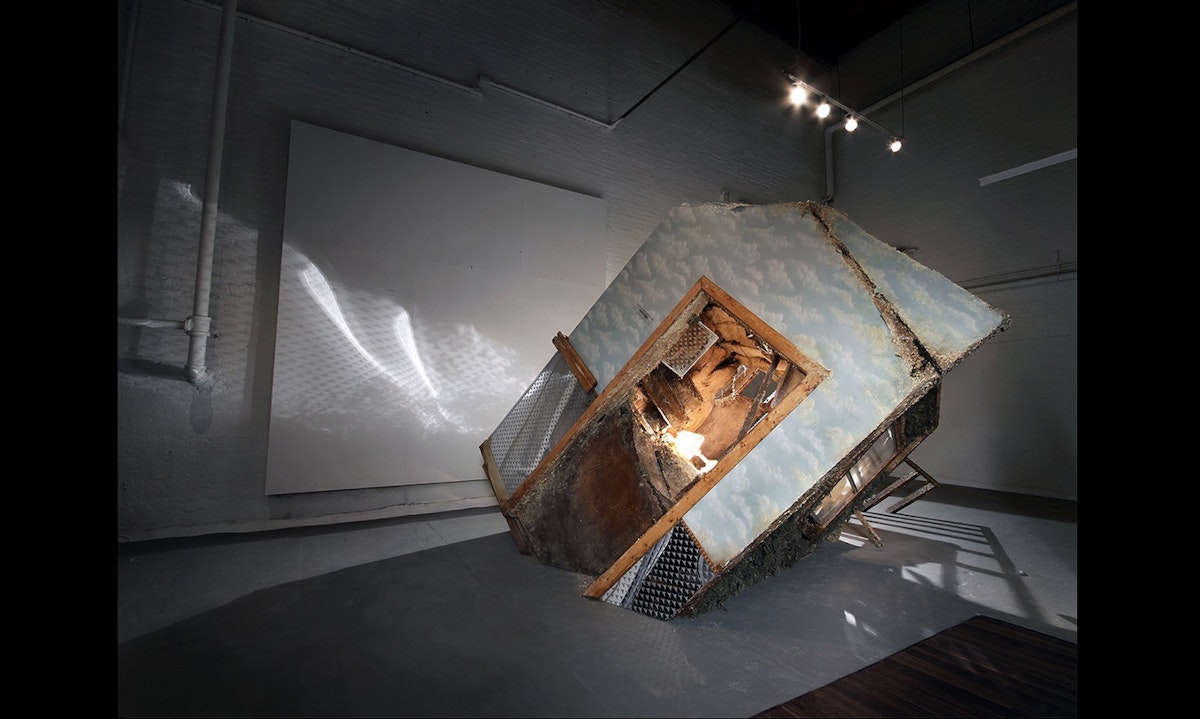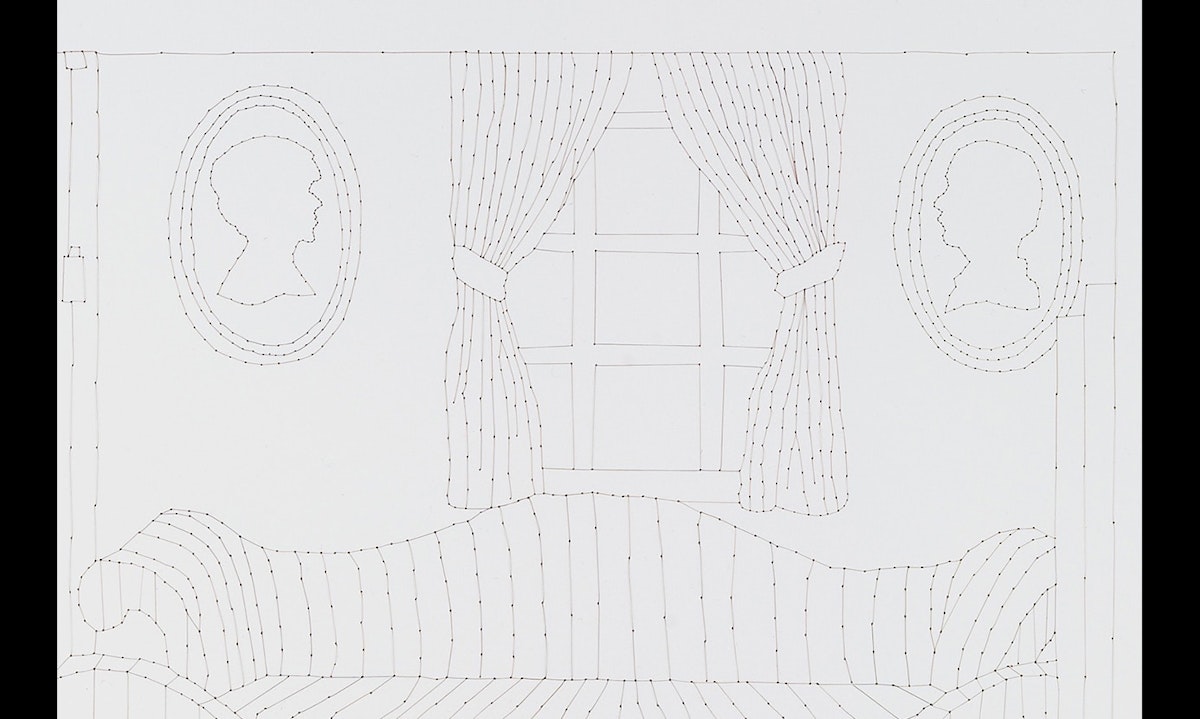Meet the 2016 MFAs
The incoming class of Stamps MFA candidates discuss their backgrounds, influences, and artistic practice.
Stephanie Brown
Tell me a bit about yourself. Where are you from, what is your background?
I am a Jamaican descendant from Delray Beach, Florida. I have been taking pictures since the 3rd grade. The moment I figured out being an artist was a possible career choice my hunt began. I spent my undergrad years at Savannah College of Art and Design (SCAD) and finished in only 3 years.
What is it about the program that appealed to you?
After spending 2 years (on and off) traveling around the world, it became a necessity for to me to make travel and other cultures apart of my artwork. Aside from being a fully funded program, Stamps has an international project embedded into its degree coursework and a grand track record of students who have traveled. This showed me that the university understood the true value of international travel.
What fuels your creative process?
My creative process is fueled by my spirituality and persistent drive to share my talents and knowledge with the world. As a female artist of color, our history is still being written and made today. I want to be a part of something greater then myself that serves to unveil the injustices and many misconceptions in cultures worldwide and move toward greater knowledge and understanding for generations to come.
Who is your favorite artist? Why?
This is a dangerous question. I like to think that I don't have a favorite artist and that every artist I enjoy just complies into this library of influence over me and my work. But I will admit that anytime someone asks me that question Robert Mapplethorpe is the first to come to mind.
Robert Mapplethorpe was the first artist to really hook me into photography as an art form. The more I researched him the more I fell in love with his techniques, appreciation to form, particularly the human body, and his dedication to doing whatever he wanted even if it was taboo at the time.
What is your favorite artwork that you created?
My favorite work created so far is tied between these two bodies of work: Enclosures and It Happens....
Enclosures was made during one of my hardest courses in undergrad. The professor really helped me by pushing me and giving me a hard time. Grateful for rigor, it was a turning point in my career that I established my own style and technique apart from my influences that would forever brand me as a photographer.
The other would be It Happens... I made this work exiting my time at SCAD and it was the most personal my work has gotten with the topic of miscarriage. This work will always be near and dear to my heart and I pray one day it will be made into a book to aide others hurt from child loss.

Robert Fitzgerald
Tell me a bit about yourself. Where are you from, what is your background?
I am originally from New England, but have had many fortunate opportunities to live and work worldwide. I earned my Bachelor's Degree in Urban Planning from Cornell University, which launched me on this journey including corporate management in Los Angeles, working photographer in San Francisco and London, HIV counselor in Kenya, and community artist and urban farmer in Baltimore.
I also hold a Masters in Community Arts from the Maryland Institute College of Art and have studied at The Hungarian University of Fine Arts in Budapest.
What is it about the program that appealed to you?
I was interested in studying at a research university which would allow me to work with a number of departments. This, along with the strength of the student work, great faculty, and an international component all brought me here.
What fuels your creative process?
Many things: street art, urban theory, gender studies, and architecture. Also, my work with AmeriCorps, the United States Peace Corps, and my social activism work in California.
Who is an artist that you're interested in at the moment? Why?
We recently had a visiting artist Orit Hofshi attend my printmaking class. I was struck by not only the scale and detail of her beautiful woodcuts, but in particular her pedagogy of teaching art in our complex world.
What is your favorite artwork that you created? Or a work that you felt especially proud of or learned something unexpected about yourself or the world through the process.
I created an installation of tea cups passage which challenged the participant to work their own body though a perceived obstacle. I am very interested in how our bodies move through space, both real and perceived.

Brynn Higgins-Stirrup
Tell me a bit about yourself. Where are you from, what is your background?
I grew up in a rural area of Ontario but have traveled and lived in many different places over the last eight years. I spent a year in southern England, another year in Scotland, and half a year in Australia. I have also had the opportunity to travel to Asia, throughout Europe and North America.
My educational background is drawing, painting, printmaking, and art history. I studied visual arts at Queens University in Kingston, Ontario and Monash University in Melbourne, Australia. In Toronto, I spent several years working with artist-run centers through writing and gallery administration.
What is it about the program that appealed to you?
The MFA program in visual arts at Stamps appealed to me because it felt both diverse and rigorous. I was excited to have the opportunity to work fluidly across media and utilize the strength of research at Michigan as a whole to inform my work.
I was also excited by the opportunities provided by the international project and various grants for self-guided and expansive research.
What fuels your creative process?
My creative process is led by inquiry, sensitivity, and the need to explore the foundational aspects of experience. I like to work in between research and intuition to explore material and formal processes and dissect how we "know" our world - engaging this question through visual platforms, such as diagrams, alphabets, and musical scores.
Who is your favorite artist? Why?
I do not have a favorite artist, but one of the artists whose work I respect the most is Hilma Af Klint. She was a pioneering abstract artist from the turn of the 20th century who was working in this style before many of her more well-known contemporaries - such as Kandinsky and Malevich - adopted abstraction. She combined spirituality and science into emotively and intellectually compelling images which speak to the eye, the heart and the head.
What is your favorite artwork that you created? Or a work that you felt especially proud of or learned something unexpected about yourself or the world through the process.
I have always enjoy working in printmaking because it combines technical and conceptual challenges in an exciting way. Although it can be a difficult medium it can also be very magical because chance can come into the work in interesting ways, its very malleable in terms of experimentation and you never quite know what you will get. Last year I produced a letterpress bookwork titled AB at the Banff Centre for the Arts and I really enjoyed the challenges of making that work.

Letterpress collage on paper, 12x16", 2016
Laura Magnusson
Tell me a bit about yourself. Where are you from, what is your background?
I am a Canadian, born and raised in Winnipeg, Manitoba - a landlocked city nestled in the wide-open prairies, smack dab in the middle of North America. Our winters are frigid and long... ideal circumstances to hide away and make art.
What is it about the program that appealed to you?
What didn't appeal? There's so much good stuff here! Interdisciplinary focus, incredible facilities, ample space to make large-scale work, diverse faculty, exciting graduate work, opportunities to travel…
What fuels your creative process?
Curiosity and questioning… opportunities to defy gravity…
Who is your favorite artist? Why?
Only one?! I am particularly inspired by Do-Ho Suh, Andrea Zittel,and fellow Winnipegger Sarah Anne Johnson. Andrea made her own island, launched it off the coast of Denmark, and then lived on it for a month. Amazing.
What is your favorite artwork that you created?
I'm going to say Ebb. It is a large-scale sculptural work that imagines my grandmother's nursing home room detached from the larger institution and lodged in the sand along the shoreline of Lake Winnipeg… Water rushes in, barnacles grow over surfaces, and room itself breaks down, recalling a beached whale or a ship that has run aground.

Photo Credit: Kaoru Ryan Klatt
Brenna K. Murphy
Tell me a bit about yourself. Where are you from, what is your background?
The question "Where are you from?" is always difficult for me because I had a bit of a nomadic upbringing. My family moved eight times to six different states throughout the U.S. by the time I was eighteen years old. Most of my family is originally from North Carolina and my formative years were more or less spent in the Southeast region - Tennessee, South Carolina, Kentucky. After I graduated with my BFA from the University of North Carolina, Chapel Hill, I moved to (amazing and wonderful) Philadelphia and lived there for almost 10 years. Most recently, I had the incredible opportunity to live in Nepal for a little over a year and a half before moving to Ann Arbor.
What a great opportunity. What were you doing in Nepal?
I traveled to Nepal for the first time in 2012, and found it really beautiful, dynamic, and full of interesting contradictions that intrigued and inspired me. When my partner needed to move to Kathmandu to conduct anthropology field work for his dissertation, I jumped on the opportunity to go with him and spend more time there. I wanted to immerse myself in the culture, learn the language, soak up the many diverse experiences I knew living there would offer me, and take advantage of the low cost of living so I could focus on art-making full time. I completed a six month artist residency at the Kathmandu Contemporary Arts Centre, conducted several workshops with undergraduates at the Kathmandu University Center for Art and Design, and had two solo exhibitions of two different bodies of work at local galleries. It's amazing what an artist can accomplish when their 'day job' isn't getting in the way!
What is it about the program that appealed to you?
There are so many appealing things about the Stamps MFA program. One thing that stood out for me in particular was the summer International Project. I got the 'travel bug' a bit later in life than most people, I think, and now I can't get rid of it - I just want to get out there all the time! To be given the time and resources within my coursework to research and make my work abroad is a unique opportunity that really excites me.
What fuels your creative process?
For many years, my creative work was mainly inspired by my nomadic upbringing and the complicated relationship I formed with the idea of "home" as a result of that experience. Now I am moving on to other topics in my work, but I'd say that the one aspect of working that remains constant for me, no matter which topic I am exploring, is meticulous repetitive labor in the art-making process. I really love locking myself in the studio for hours on end to create my pieces, which almost always include a repeated action and/or working with multiples. In a society that has become so fast paced and convenience/efficiency-driven, I think it's important to slow down and actually spend time with a task. I fear the value of labor and the handmade is getting lost in many ways in our cultural landscape, and I suppose this is my way of trying to reclaim that.
Who is your favorite artist? Why?
There are too many wonderful artists out there in the world to possibly name a favorite! Instead, I will mention someone whose work I love that some readers may not be familiar with: Kate Kretz. I absolutely love her pieces made with human hair, and her embroidery work is wonderful. Her technique is very impressive, and I find her works about motherhood particularly moving.
What is your favorite artwork that you created?
My relationship to my work is always a bit complicated. On one hand, because I generally have to work on my pieces for such long periods of time, I often feel like they are my 'children' and I love them dearly. On the other hand, because I work on them for so long, I also end up being sick-to-death of them by the time the making process is complete. There's definitely a bit of a love/hate dynamic between me and my work at times.
The piece that comes to mind most when I think about this dynamic is my 4x6 foot hair embroidery, Home Imagined (Dollhouse), which I made while working at two different artist residencies in France in late 2012 and early 2013. It took me over four months to embroider 1,154 single strands of my hair into an enormous piece of watercolor paper that I had to suspended from the ceiling so I could reach both sides of the paper while sewing. With each stitch, I had to walk all the way around to the back side of the paper in order to pull the hair through its current hole and then push it back out through a new hole to the front side of the paper again - this action was repeated (literally) thousands of times. It was a time consuming, physically demanding, and tedious process, but it resulted in one of the works that I am proudest of and find most successful.

Artist’s hair embroidered into 4x6 foot watercolor paper, 2013
All interviews by MDes candidate Manasi Agarwal.
Learn more about our MFA students: check out their full profiles for images, bios, and more.